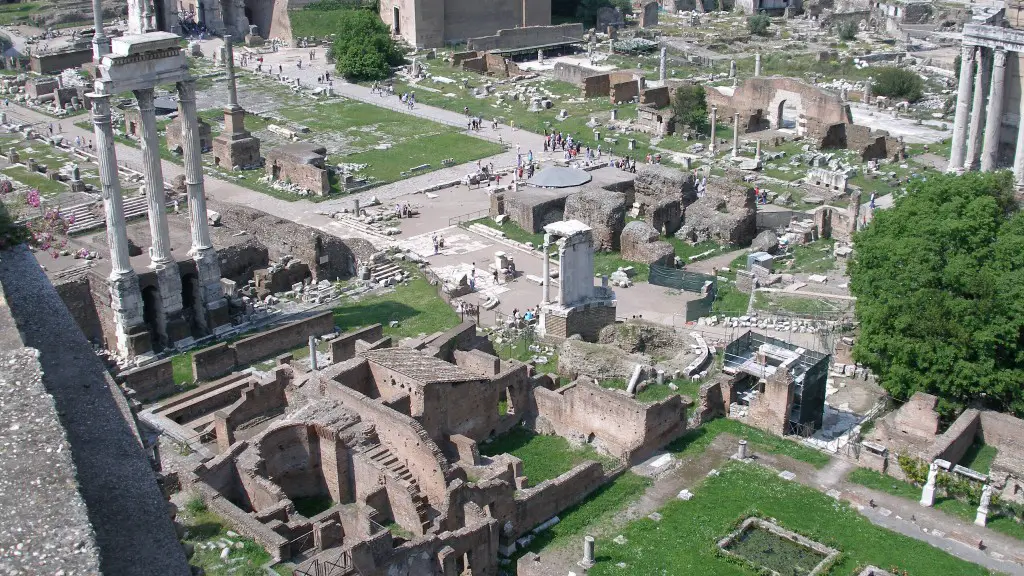Religious Influences in Ancient Rome
Rome was an expansive empire in the ancient world that conquered much of Europe, North Africa, and the Middle East. Throughout its time, Rome was very influential in religious practices and developments, especially those involving Christianity and Judaism. Despite the various religious influences that populated the Roman Empire, paganism was the primary religion of the ancient Romans.
Paganism was the collection of polytheistic religions that worshiped deities, spirits, and local gods. Different deities worked in Rome as guardians for society. For example, Janus, the Roman God of beginnings, ended, and doorways, was seen as the God of transitions and as a result, was featured on coins and monuments in the early Republic.
Rome’s religion was largely focused around honoring the gods, and performing elaborate ceremonies in their honor. During these ceremonies, the Roman people would offer sacrifices to appease the gods, like placing a piece of meat or an animal on an altar. Out of all of the potential gods, Vesta, the goddess of the home and hearth, is believed to have been the most important to the Romans. Temples were dedicated to her and sacred priestesses dedicated themselves to her service.
The Senate was in charge of the state rites and ceremonies, and it was believed that if the ceremonies were not performed properly, then the gods would see Rome as unworthy and no longer protect it. Typical ceremonies the Senate was in charge of were to placate Janus in January, a Flamen Dialis to placate Jupiter Optimus Maximus, and Carmentalia in December to please the goddess Carmenta.
An important part of the religious customs of Rome was the practice of augury. This was a type of divination which involved looking for omens in the entrails of sacrificial animals, as well as from other birds. This practice was mainly used for governments decisions and laws, and was monitored by a college of priests called the Augurs.
Influences from the East
The religion of Rome was heavily influenced by the cultures of the eastern Mediterranean. Many gods that the Romans adopted from other cultures were originally from distant places, like Zeus from Greece, or Baal from Northwest Semitic cultures.
In fact, the practice of augury may have also come from outside of Rome. A mystical language called Etruscan had an impact on the culture of Rome and is believed to have taken part in the birth of the religion of the ancient Romans.
The culture of Rome was also heavily influenced by the religion and culture of the Jews. Jewish culture had a powerful presence within the Roman Empire, and Jewish practices like the great annual festival of Passover, which celebrated the occasion of the Hebrew Exodus, had an impact on religious practices in Rome.
The most fundamental and important religious influence to Rome was that of the Greeks. The Romans adopted and modified many of the beliefs and religious practices of the Greeks. In fact, many of the deities which the Romans honored were actually from the Greeks, as the gods would often be adopted and given a Roman name. For example, the Greek god Zeus was known as Jupiter by the Romans.
The Cult of Mithraism
One of the oldest religions in Ancient Rome was the cult of Mithraism, which dates back to the first century BCE. It was a mystery cult that was worshiped mostly by members of the military, and eventually became popular across the Roman Empire.
The cult of Mithraism was based around the concept of the savior god Mithras and his victory over the great cosmic bull, which was seen as a symbol of fertility and renewal. The cult was seen as a moral code, and Mithras was viewed as a god who could bring salvation and redemption to his followers.
The cult of Mithraism was heavily influential in the Roman Empire, and was one of the main religions of Rome until its decline. The cult was popular enough to have been adopted by the Emperor Constantine, who even incorporated it into his own personal Christianity.
The Rise of Christianity
The religion of Christianity was not well received in its early stages, being deemed an illegal religion in the Roman Empire for many years. Nevertheless, the belief system endured and eventually became the official religion of Rome under Emperor Constantine in the fourth century CE.
Eventually, Pagan folk traditions in Rome were replaced with Christian practices, and the temples dedicated to Roman gods eventually transformed into churches. Religion began to play a larger role in everyday life, and people began to regard Christianity as the one true religion of the empire.
The teachings of Christianity began to spread and be accepted in Rome, and eventually, the symbols of pagan religion began to become illegal. The cults of Mithraism, for example, began to decline.
Conclusion of Paganism
Paganism in Rome had a great influence on the lives of the people in the Roman Empire. Every day life and large public festivals were strongly entwined with religious ceremonies. It was only until Christianity became more popular and its teachings were accepted that the tradition of worshipping multiple gods in Rome came to an end.
Variations Across the Empire
The religious practices of the ancient Roman Empire were heavily varied, depending on which region was occupied by the Roman rulers. In areas that were far away from Rome, like in Britain or Spain, the religion was largely Pagan or a mix between Christianity and Paganism, while the dominant religion in Rome itself was that of the pagan gods.
Even though Christianity was accepted as the state religion, it was still not a rule set in stone. Different areas and cities may have practiced a different religion, as a result of their cultural ties with nearby regions or countries.
Christianity Today
Christians today, who are descended from the ancient Roman Empire, have largely kept the same beliefs that were held by the ancient Christians. Different branches of Christianity may choose to practice different traditions and beliefs, however, this does not mean that their beliefs now differ from the ancient practices that originated in Rome.
The religion of Christianity has become embedded in the culture of the Roman Empire and its descendants, and is still a major influence in the world today. The religion as it is practiced today is likely very different from the one that was practiced by the ancient Romans, however there are many vestiges of the former faith which still remain today.
Female Gods and Priestesses
The religious practices of the ancient Romans had plenty of room for female deities, even though the official state cult of the Romans did not include female deities in its pantheon. This was taken up by minor cults and branches of religion, like the cult of Vesta, which was composed of priestesses dedicated to representing the goddess of the home and hearth.
In the same way that Christian priests serve in churches, these priestesses were in charge of performing certain rituals and ceremonies in honor of their respected deity. They also presided over anything that was related to their goddess and also had general roles in society.
The Life of the Ancient Roman
Religion was a crucial cornerstone of life in the Roman Empire and was very pervasive in all aspects of daily life. Everyone had to pay reverence to the gods in some way, and public ceremonies were commonplace. This served to keep the gods happy, and in turn, keep Rome safe from harm.
Religion was so important that everyone, from the emperor to the common Roman, paid homage to the gods, and it was seen as an integral part of everyday Roman life. Religion was also a key component of decisions taken by the state, and of course, Christianity later became a major force in the culture and politics of Rome.


